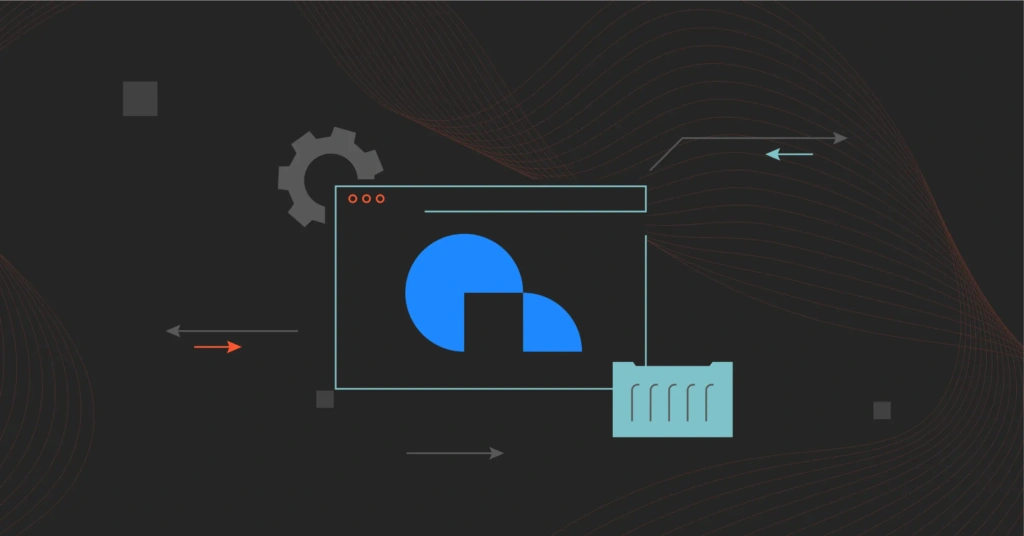As of 2024, 89% of organizations are using a multi-cloud strategy. Among the reasons for this shift are avoiding vendor lock-in and achieving scalability and cost-effectiveness.
Yet, maximizing the value of investments in multi-cloud environments is a major challenge. That’s where multi-cloud FinOps solutions like Ternary come in — or, as you’ll see in this guide, where the top Ternary alternatives can take the lead.
What Is Ternary

Ternary optimizes cloud costs across different environments, such as AWS, Azure, and GCP.
The platform is available as both a SaaS solution and a self-hosted option, giving organizations flexibility depending on their cloud strategies.
Ternary also simplifies cloud billing with the FinOps Cost and Usage Specification (FOCUS™). FOCUS is a standardized framework that ensures cloud billing data is consistent across different providers. The platform also offers tools that map cloud-specific terms to this standardized format. This helps teams manage multi-cloud costs more effectively.
But like all services, Ternary has its own downsides.
- Features take a long time to roll out.
- The platform is unable to display more than one data set in a report (can’t track spend against budget in one graph).
- Fixed subscription model
- May not be ideal for container workloads
A Ternary alternative can address these challenges and offer more capabilities.
Top 13 Ternary Alternatives To Consider
Consider the following.
1. CloudZero
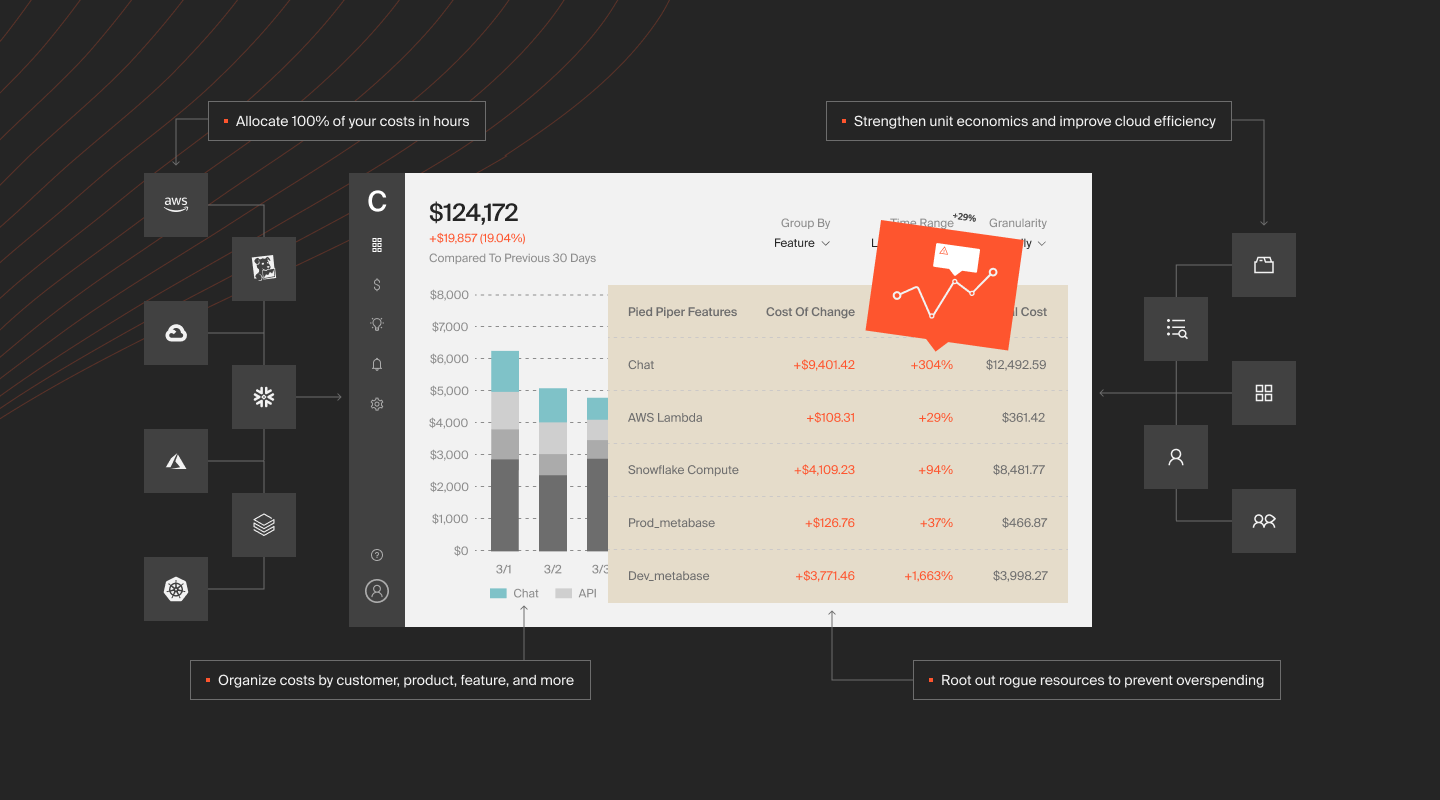
Unlike most FinOps platforms, CloudZero delivers 100% cost allocation in hours. It aggregates costs from all cloud, PaaS, and SaaS vendors into one platform, enabling teams to see the full cost of their stack without needing multiple tools.
With CloudZero, you can:
- Track the costs of shared, untagged, and untaggable resources, ensuring a full view of cloud costs.
- Get detailed insights such as cost per deployment, customer, feature, product, team, and more. This flexibility enables engineering and finance teams to act quickly on the data.
- Get noiseless anomaly alerts via Slack in case of cost spikes or underlying issues such as system failure.
- Customized cost views and reports that align with your spending pattern.
- Get a dedicated FinOps Account Manager (FAM) who offers continuous support and guidance. Your FAM will help you implement FinOps best practices and monitor your progress, ensuring you get the most out of your FinOps strategy.
CloudZero’s Certified FinOps Practitioners are helping companies like New Relic, Remitly, and MalwareBytes save millions on cloud costs. You can, too!  to see CloudZero in action.
to see CloudZero in action.
2. Xosphere
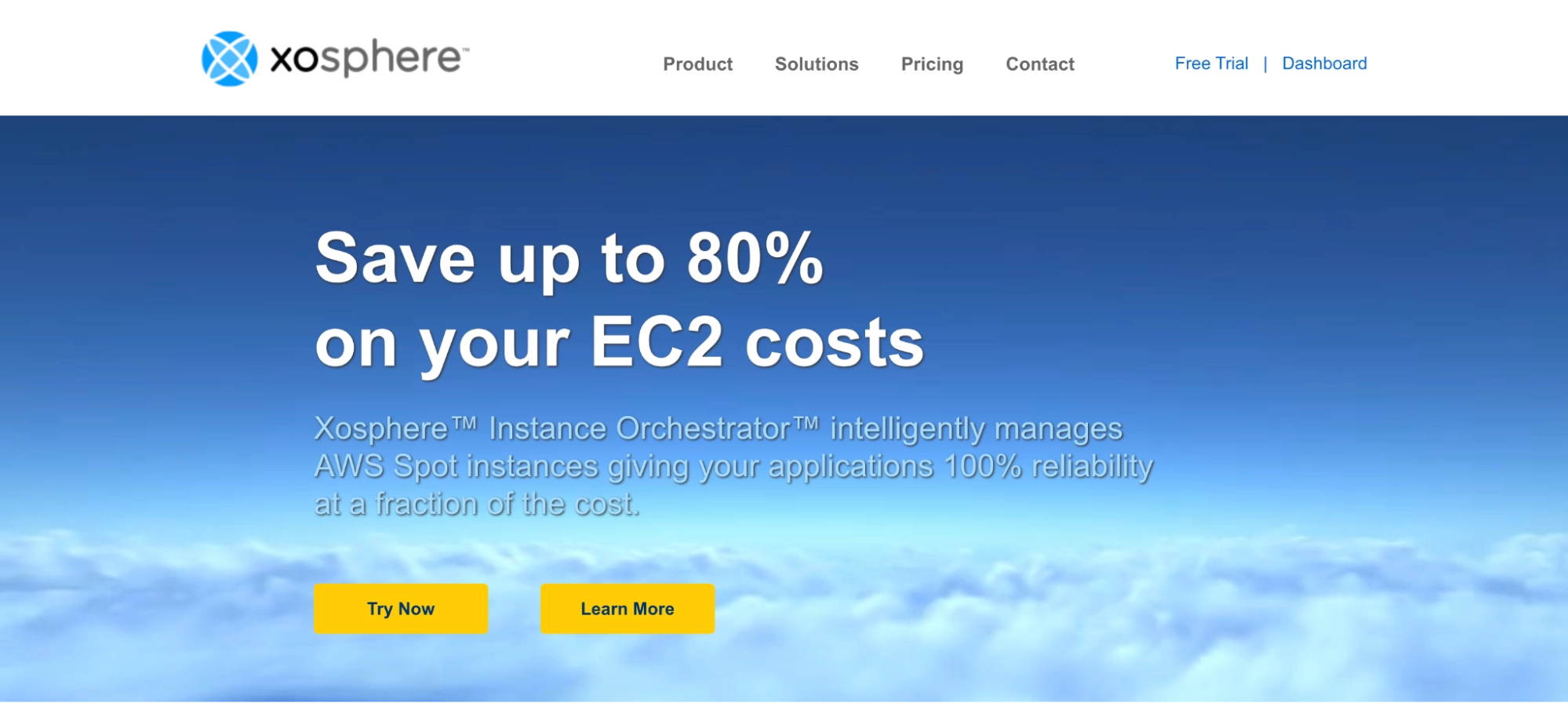
Xosphere manages the balance between lower-cost Spot instances and more stable On-Demand instances.
It integrates directly with AWS Auto Scaling Groups, using tags to control which instances or groups should be managed. It then continuously monitors instance prices and automatically replaces On-Demand instances with cheaper Spot instances when favorable pricing is available. If Spot instances are interrupted, the system instantly switches back to On-Demand, ensuring no downtime.
Xosphere is also secure, as it runs entirely within the user’s AWS environment, keeping data under full control.
3. ProsperOps
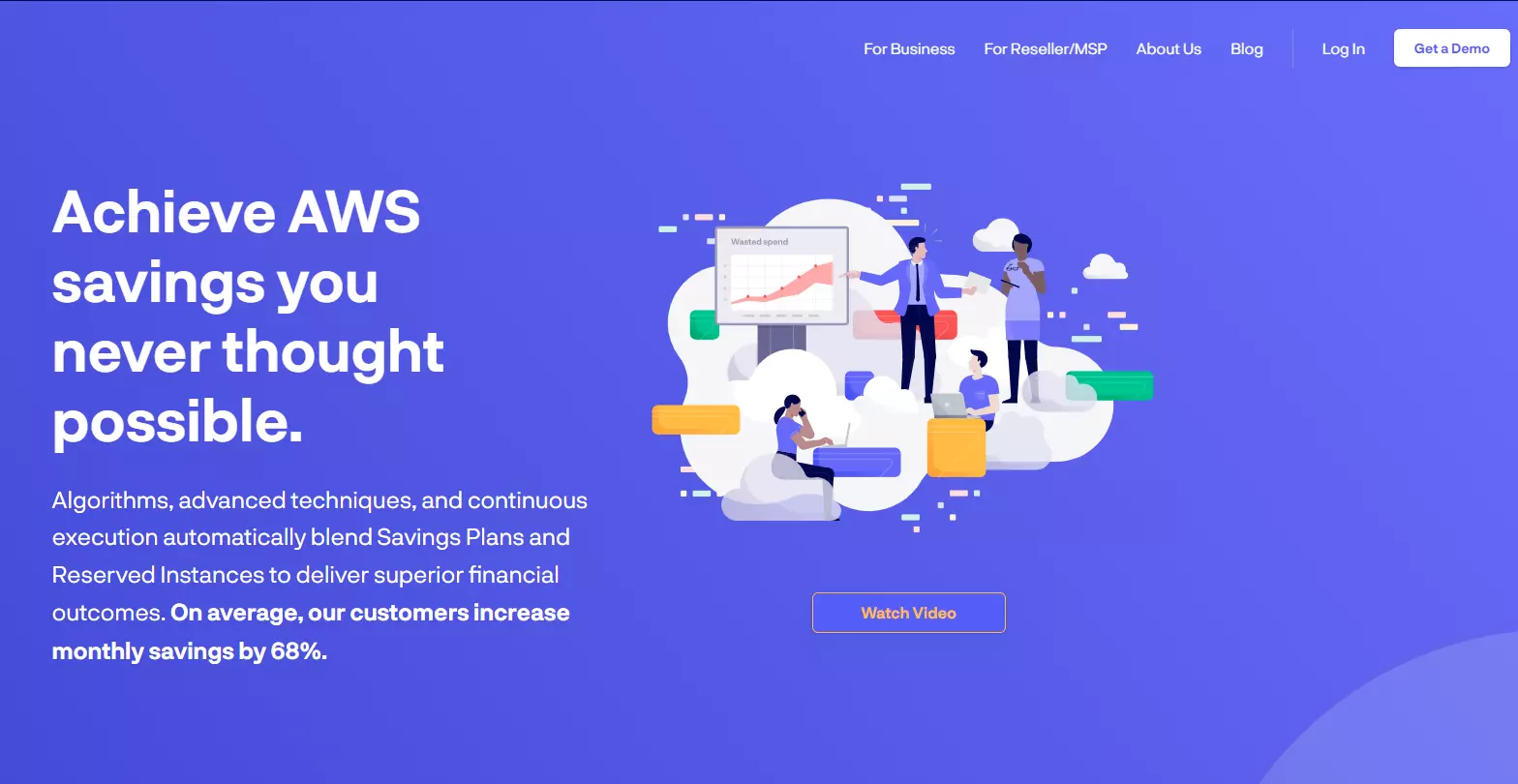
ProsperOps uses automation to manage and continuously adjust Reserved Instances and Savings Plans.
The tool also tracks and optimizes the Effective Savings Rate (ESR), a metric that quantifies the return on cloud financial management activities.
ProsperOps also partners with CloudZero to provide an integrated solution that combines automated discount management with detailed cost intelligence.
4. AWS Cost Explorer
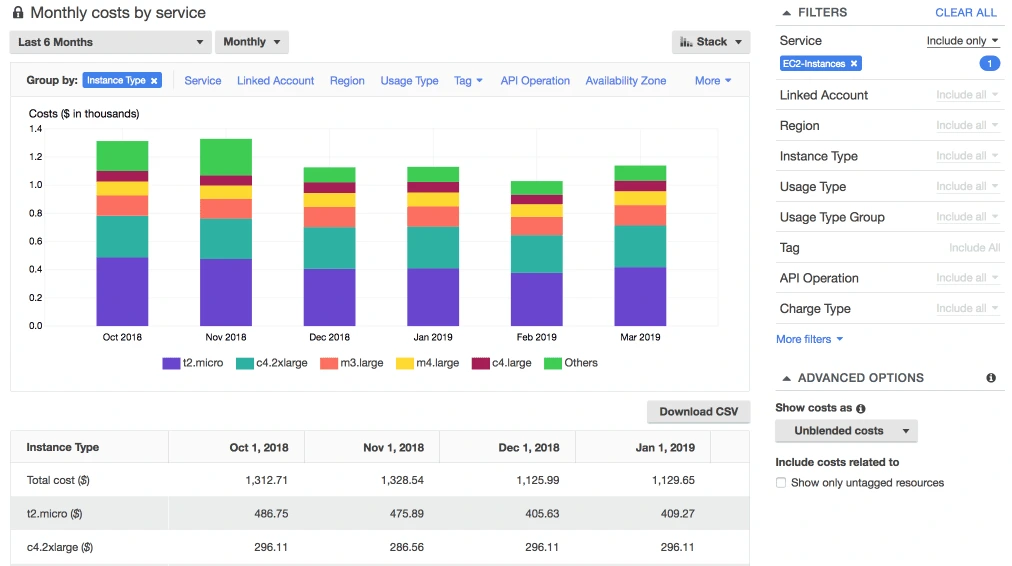
AWS Cost Explorer is a single-cloud FinOps tool that tracks, analyzes, and optimizes costs within AWS in real-time.
With Cost Explorer, teams can visualize trends and patterns over time to understand cost drivers and predict future expenditures.
The platform also enables the creation of cost and usage reports. These reports can focus on different periods, resources, and services. It also integrates with AWS Budgets, allowing teams to track spending against predefined thresholds.
Cost Explorer, however, relies on tagging for granular insights.
5. Datadog
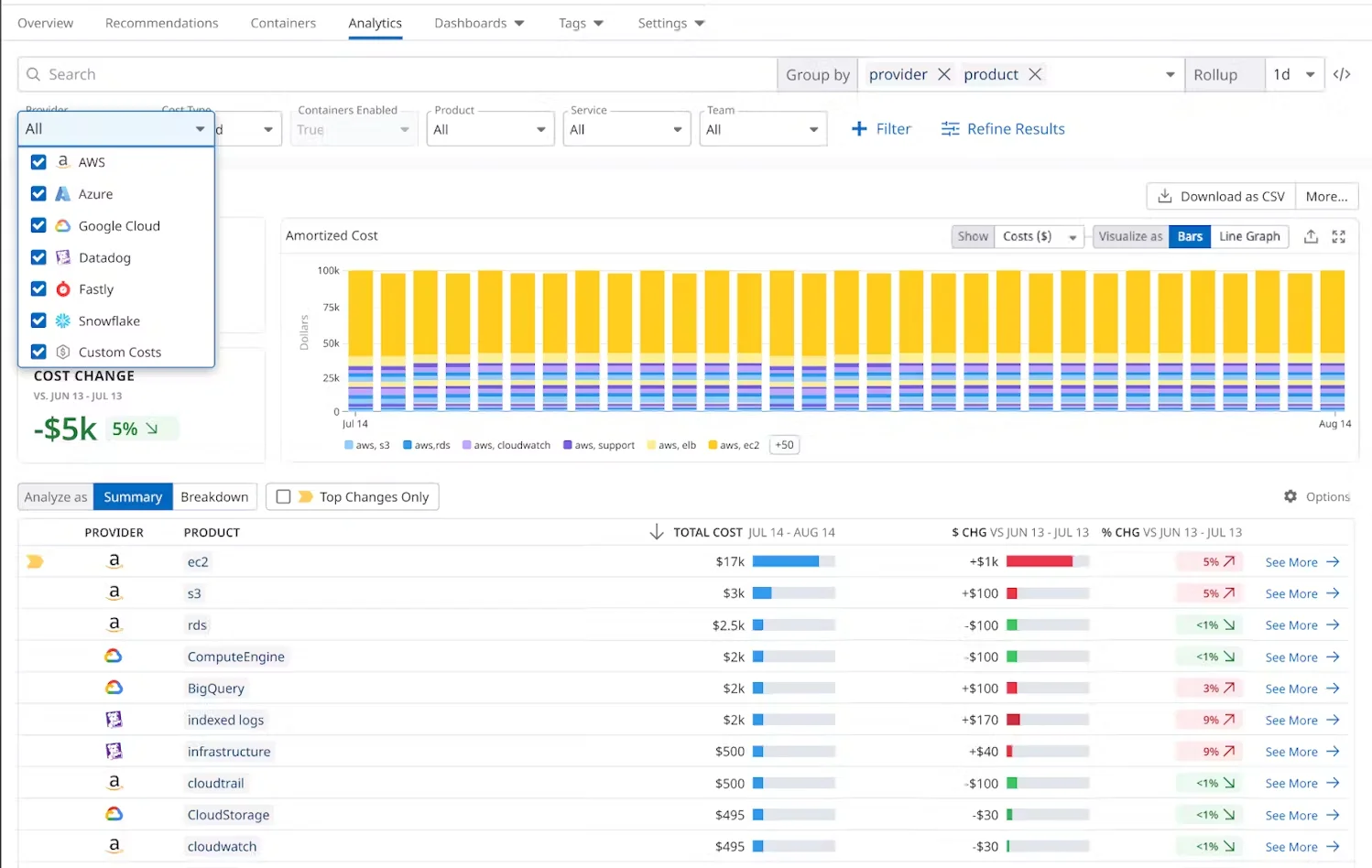
Datadog’s Cloud Cost Management unifies cloud cost with performance data in a single platform. It integrates cost data from cloud providers and other SaaS p[platforms, helping engineers and FinOps teams understand their total cost of ownership. This visibility allows teams to proactively optimize resources using automated recommendations and identify cost changes at granular levels.
Datadog’s Tag Pipelines ensure that all cloud costs are accurately tagged and attributed to the business units. It enables users to create rules that address missing or incorrect tags or infer new ones based on business logic.
It also supports Kubernetes visibility by tracking costs of the pod, namespace, and cluster levels.
6. Kubecost
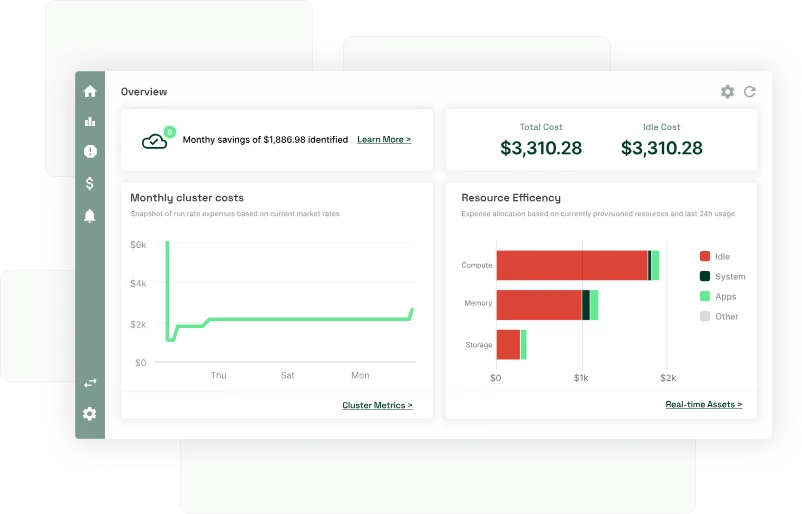
Kubecost provides a unified view of cloud costs from multiple Kubernetes clusters across cloud providers or on-premises environments, all in a single view or via API. Teams can view their cloud costs distributed across Kubernetes concepts such as namespaces, deployments, and services.
Kubecost also offers four types of cost alert notifications. The Recurring Update sends scheduled cost reports by namespace. Budget Alerts notify when spending exceeds a set threshold. Spend Change Alerts detect spikes in costs based on past averages. The Efficiency Alerts flag over-provisioned resources using an efficiency ratio.
7. Apptio
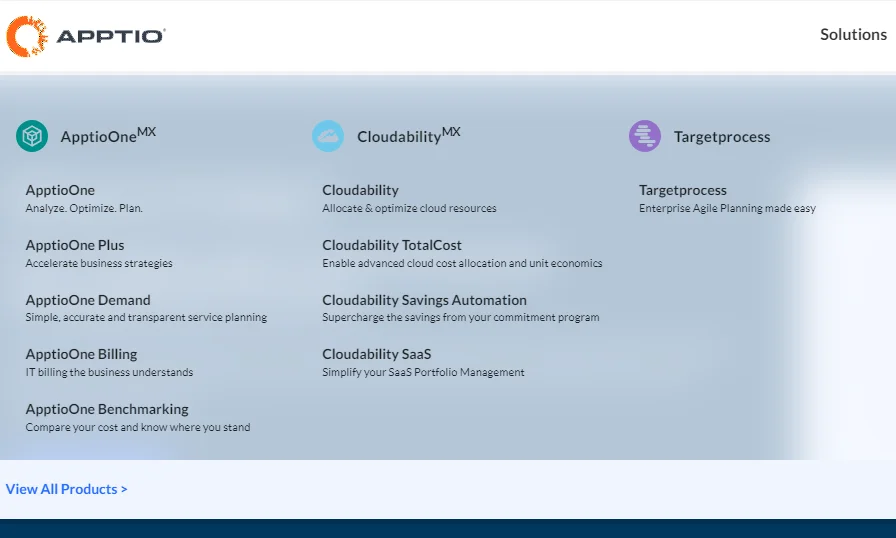
Apptio offers tools to help organizations implement FinOps by managing cloud and IT costs.
Cloudability optimizes costs in multi-cloud environments. It offers real-time insights, identifies cost inefficiencies, and automates optimization processes. It also integrates with DevOps tools to manage multi-cloud deployments.
ApptioOne supports the management of TCO. It collects financial data from multiple sources, helping users understand the overall cost impact of their investments.
TargetProcess integrates financial management with Agile project management. It also supports portfolio management, helping teams prioritize investments based on business goals.
8. Harness
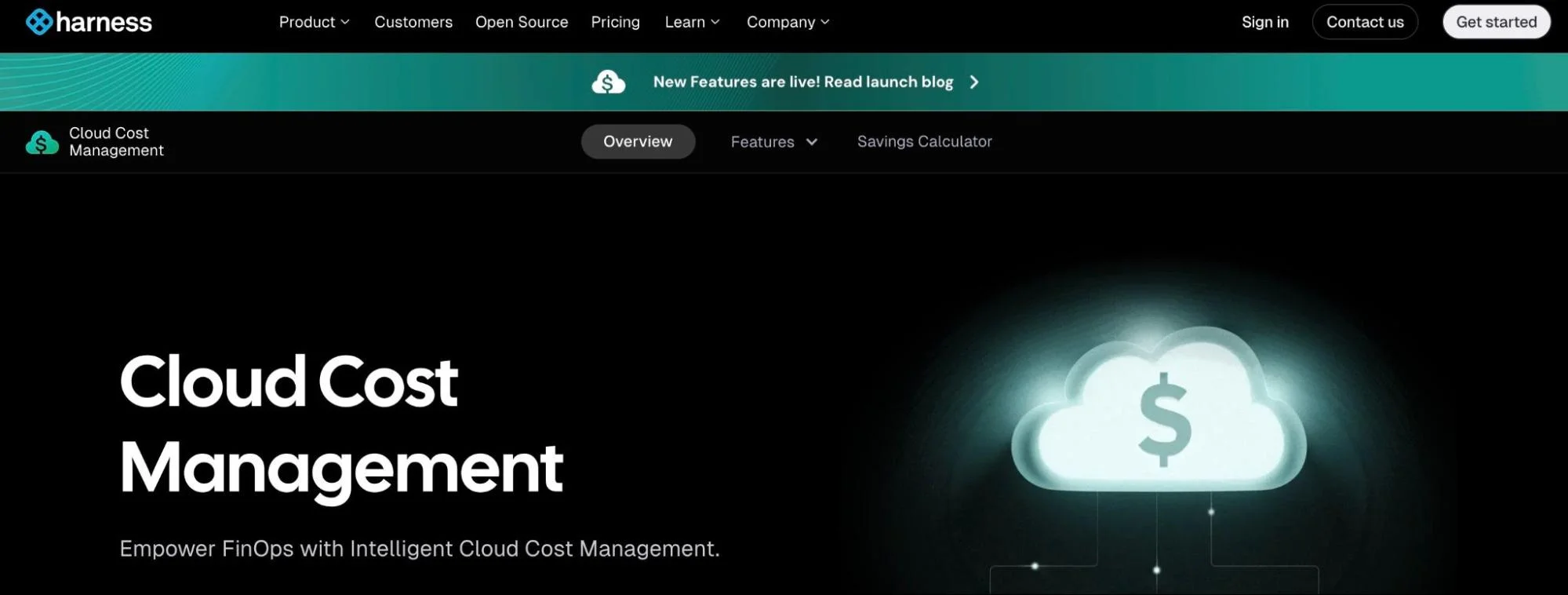
Harness also features a suite of tools that supports financial visibility. Its Commitment Orchestrator automates the management of cloud commitments, RIs, and Savings Plans. It uses ML to analyze historical usage data and projected workloads and recommends and automates the most cost-efficient commitment option.
Cloud AutoStopping automatically shuts down idle resources, preventing cloud waste and saving up to 70% on cloud costs.
Governance-as-Code on the other hand enforces financial and security policies to maintain compliance and reduce unnecessary spending.
9. Spot by NetApp
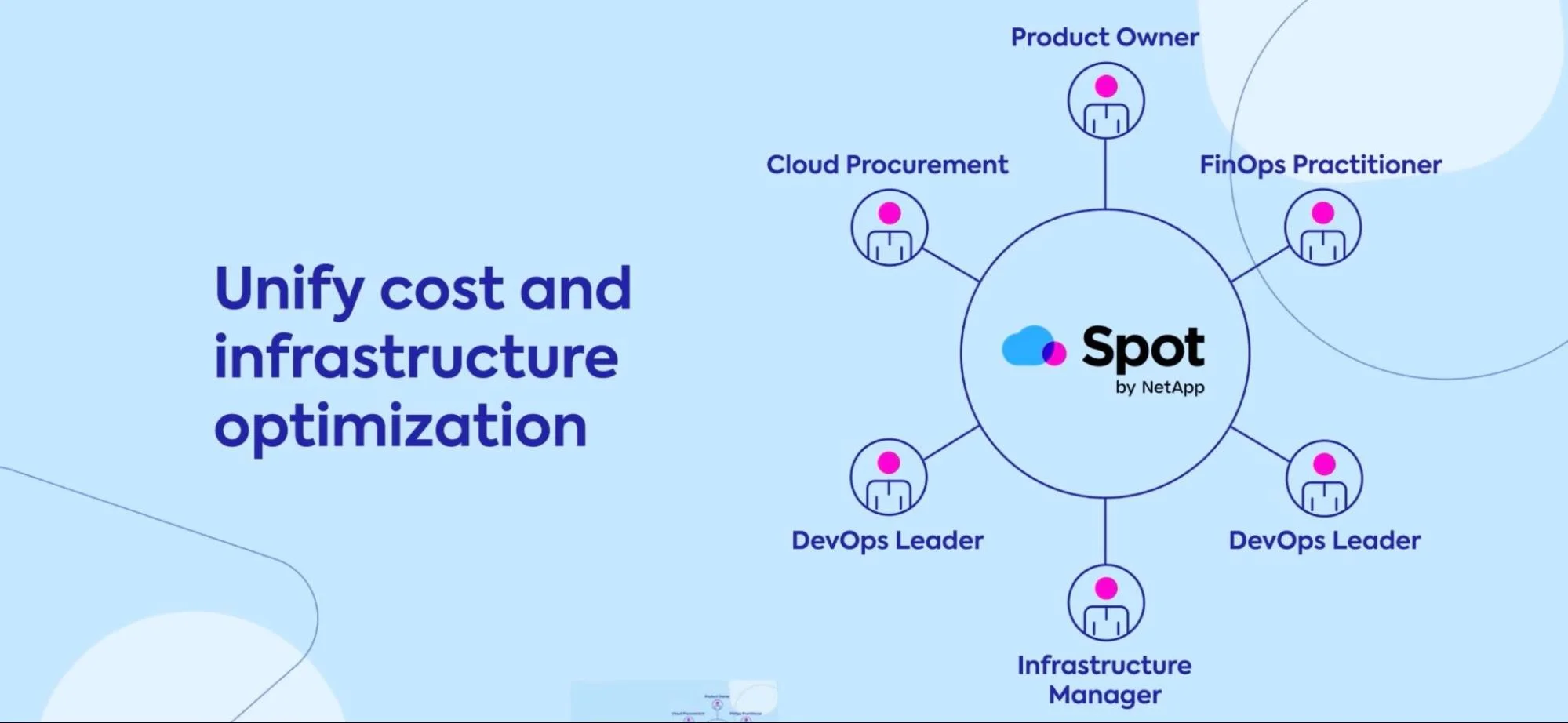
Spot by NetApp offers detailed reports, customizable dashboards, and alerts to help users track costs, usage, and potential inefficiencies. This visibility empowers teams to understand resource allocation, cost centers, and opportunities for optimization.
The platform adjusts cloud resources in real-time to optimize infrastructure for both performance and cost.
Spot’s tools, such as Spot Eco, help users manage cloud commitments for AWS and Azure.
10. CloudCheckr
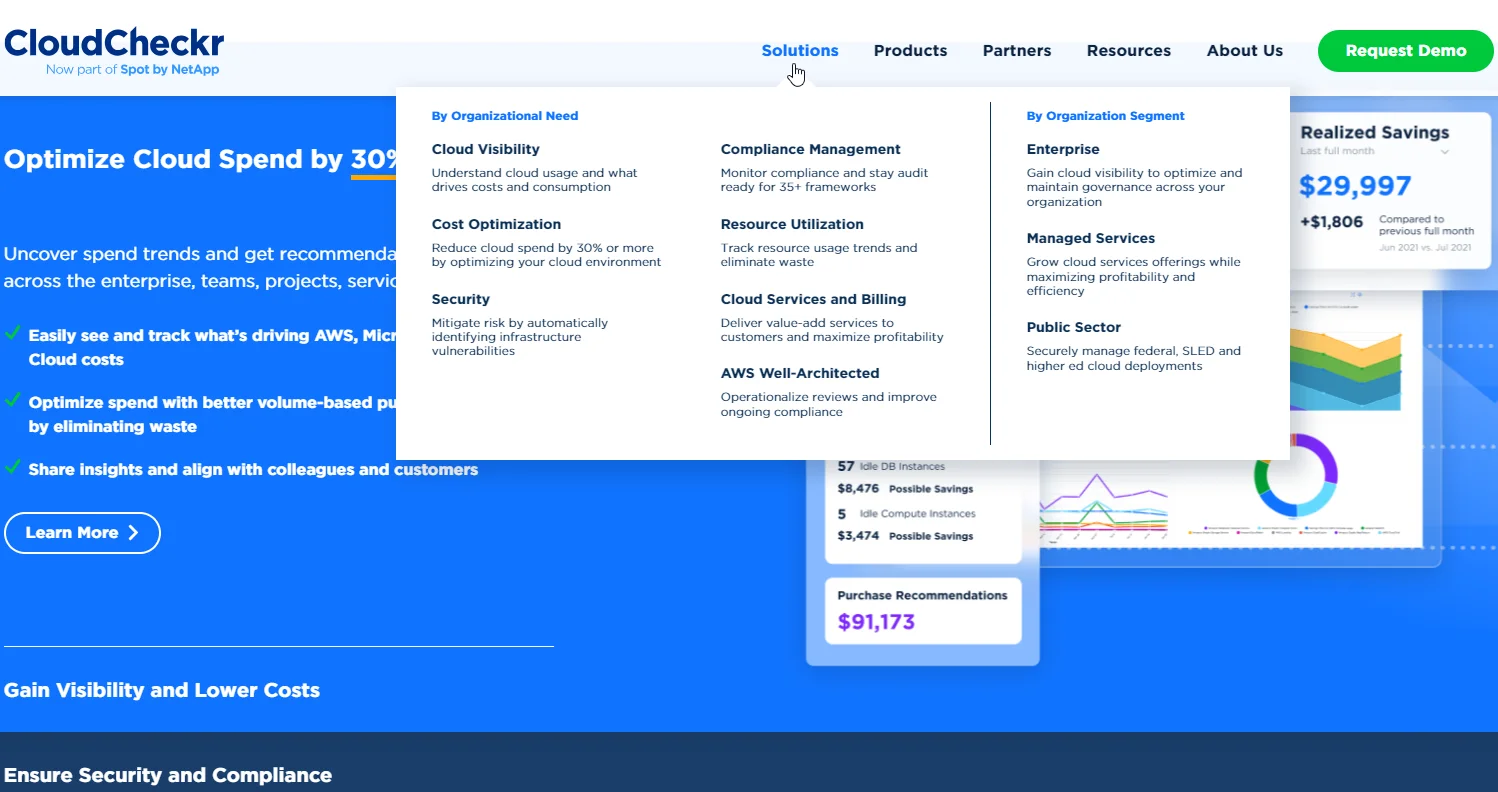
CloudCheckr delivers robust cloud cost, security, and compliance management solutions.
It automates rightsizing and rebalancing, ensuring that cloud infrastructure is continually optimized for performance and cost.
For security visualization and management, CloudCheckr detects potential risks such as infrastructure misconfigurations. It then uses automated remediation to eliminate these threats and secure cloud environments.
CloudCheckr also supports over 35 security and compliance frameworks, helping organizations maintain an audit-ready posture at all times.
11. Granulate
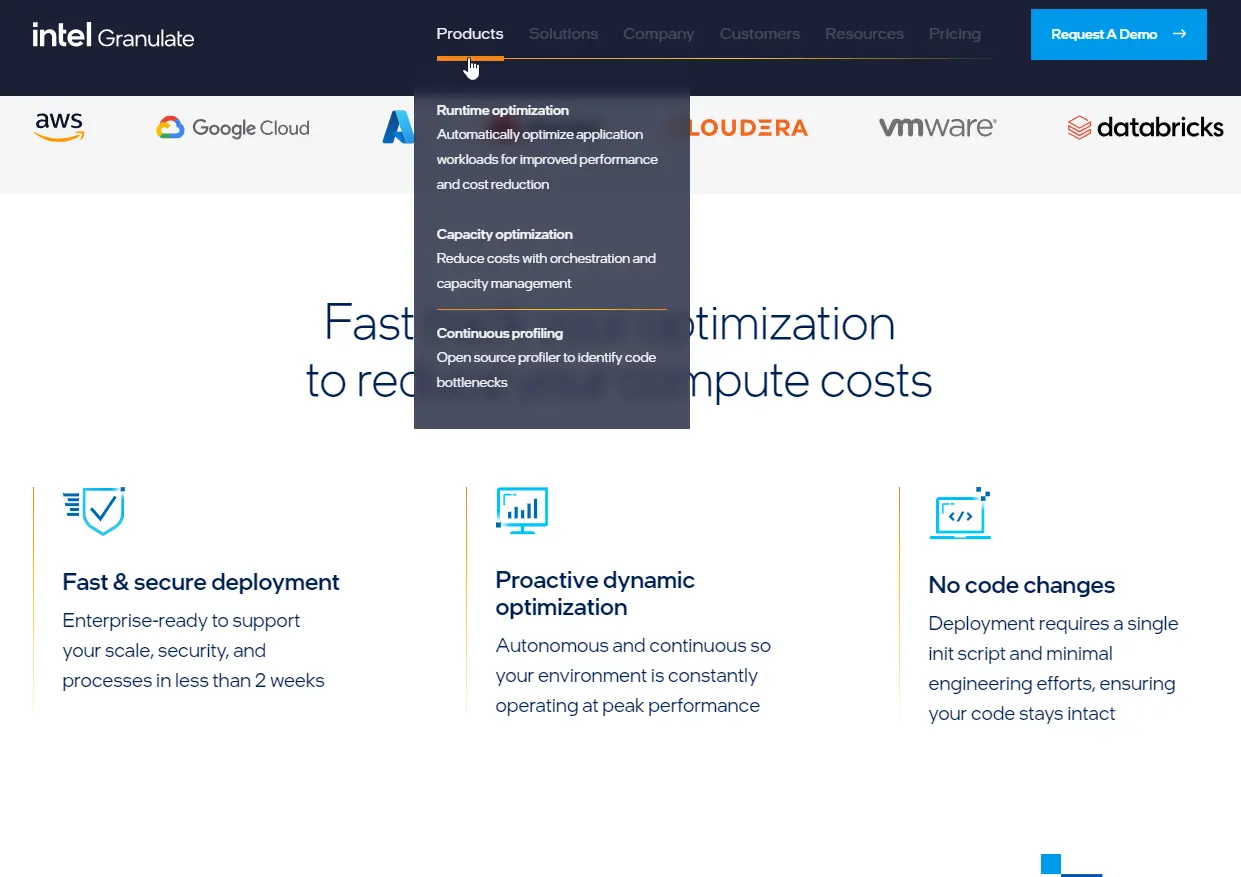
Granulate uses machine learning to optimize applications in real-time. It analyzes how resources are used and adjusts them automatically, improving response times and speeding up processing.
The platform lowers costs by managing resources based on actual usage. It prevents over-provisioning by scaling resources like VMs and containers only when needed. The Granulate’s gMaestro tool is also particularly effective in Kubernetes environments.
Granulate’s G-Profiler ensures continuous insights into how your code performs. It spots bottlenecks and inefficiencies without the need for code changes. It also runs with minimal impact on performance, helping teams optimize their applications.
12. Densify
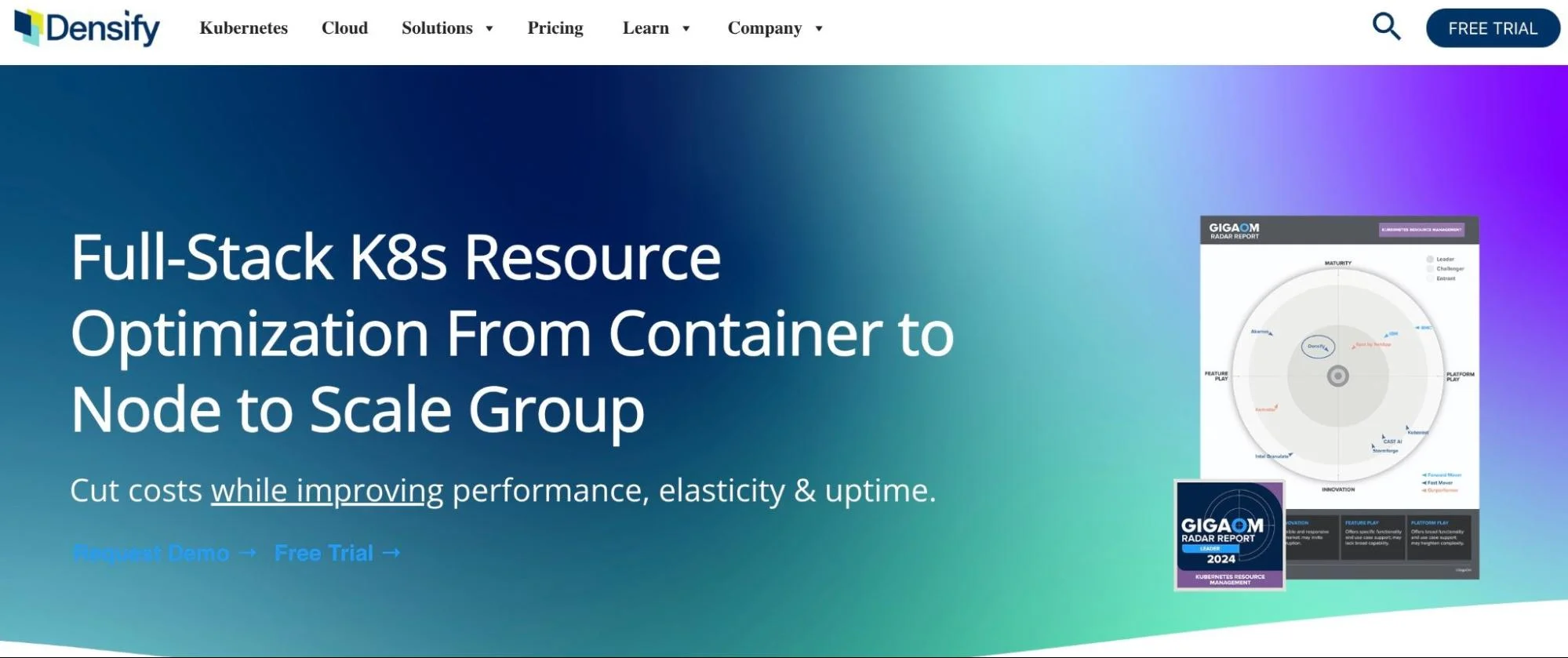
Densify supports FinOps across multi-cloud environments, including AWS, Google Cloud, and IBM Cloud. It provides advanced analytics to help organizations optimize cloud resource usage and minimize costs by preventing over-provisioning.
It also supports container services such as Kubernetes and Red Hat OpenShift to automatically analyze and adjust container resources.
Densify also enables users to create automated scaling groups and integrate cost optimization into DevOps pipelines.
13. Yotascale
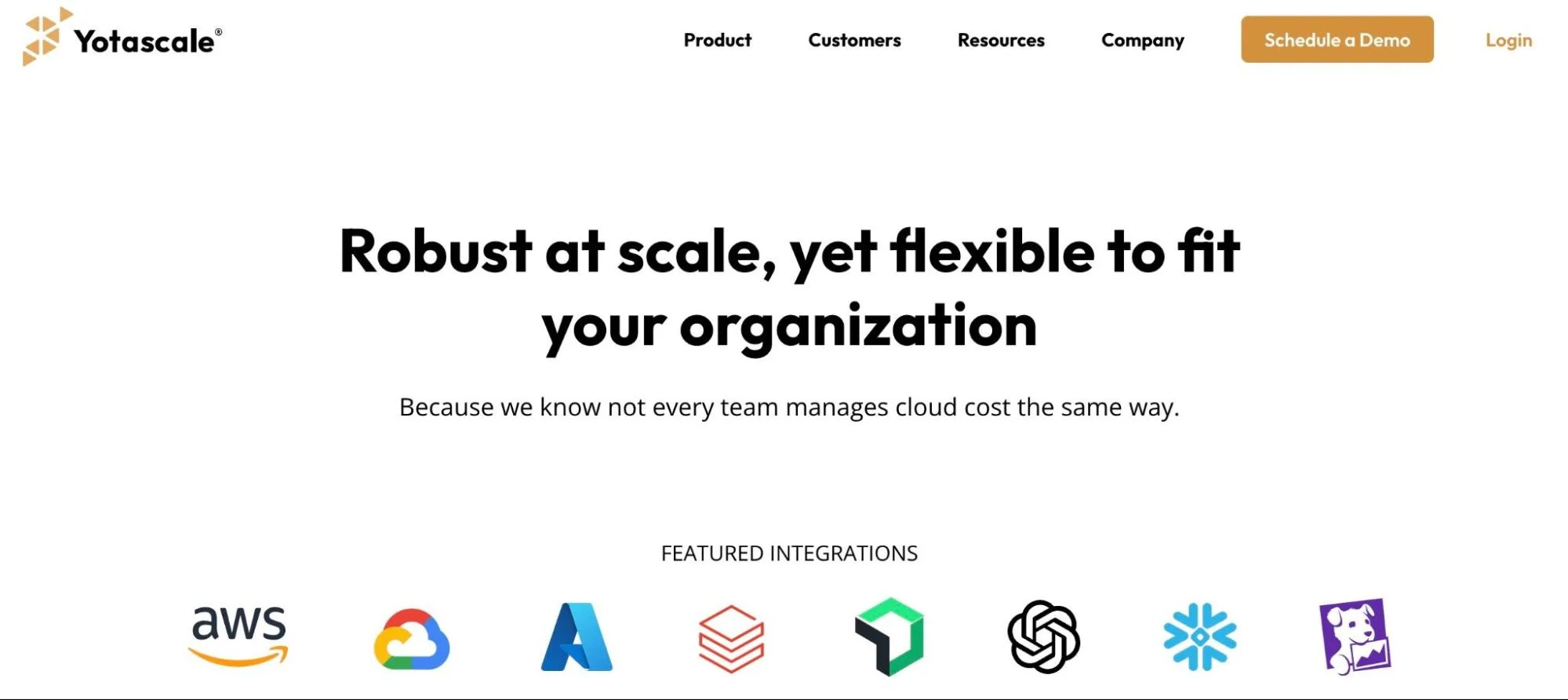
Yotascale offers customized recommendations for specific teams and business contexts using tags, services, and account IDs.
It also supports container pod rightsizing by analyzing up to 30 days of historical workload metrics. This enables it to recommend optimal resource sizes for K8 pods, ensuring that clusters run efficiently while minimizing costs.
What’s Next? Leverage Cost Intelligence To Elevate Your FinOps Strategy With CloudZero
Cloudzero’s Cost Intelligence helps organizations see exactly where and how their cloud budget is being spent. This visibility is critical for identifying areas where costs are spiraling out of control. It also helps track which teams or departments are driving the costs.
CloudZero fosters collaboration between finance, operations, and engineering teams. It ensures that all teams work from the same data, holding them accountable for their spending and aligning their goals with the organization’s financial strategy.
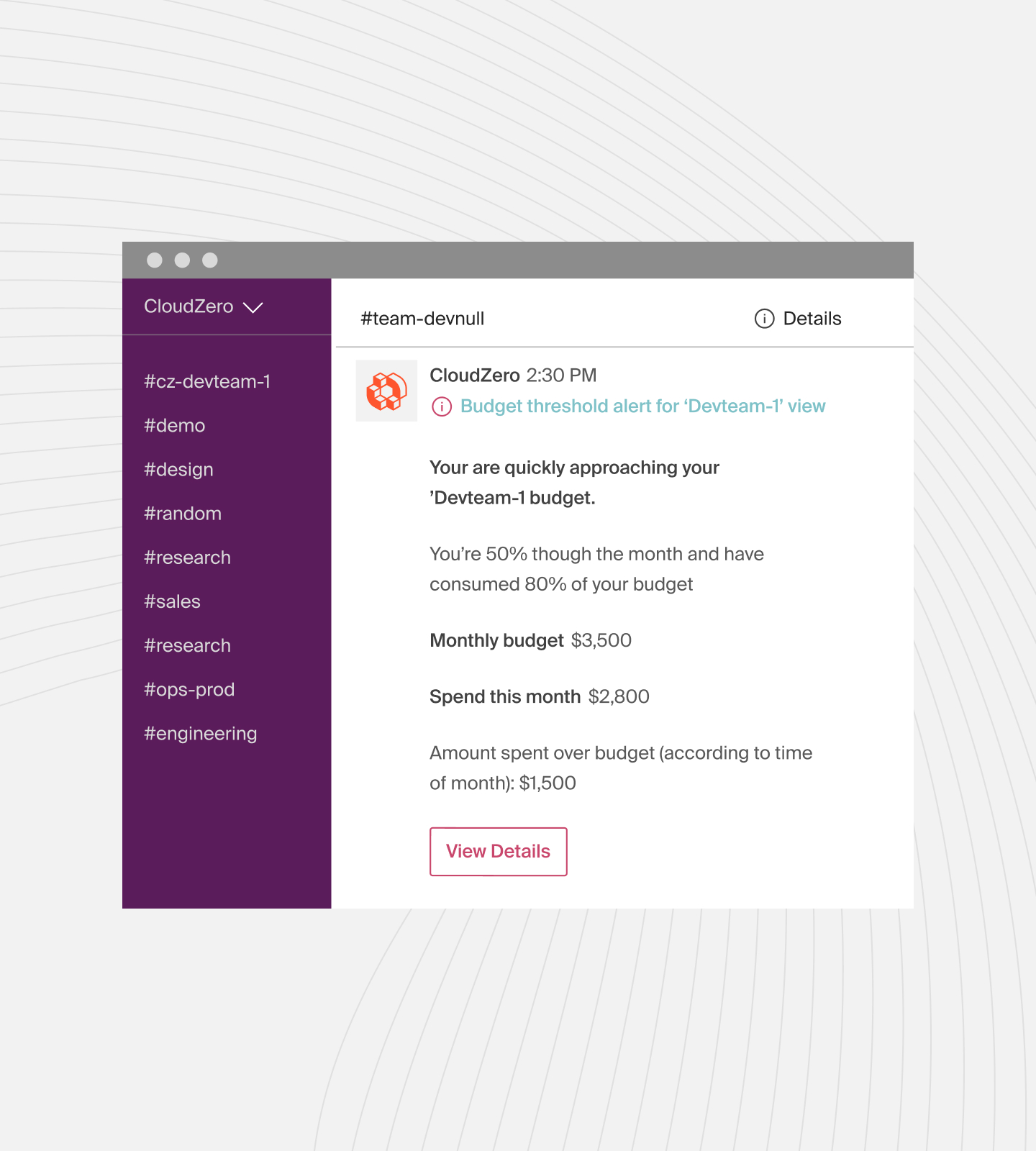
It also uses accurate cost data to help businesses forecast future cloud expenditures more reliably. This allows for better financial planning, ensuring that budgets align with actual needs.
 , and CloudZero’s Certified FinOps Practitioners will guide you in optimizing cloud costs, while maintaining performance.
, and CloudZero’s Certified FinOps Practitioners will guide you in optimizing cloud costs, while maintaining performance.

